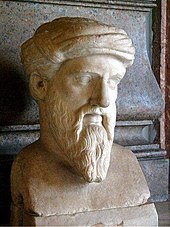Most of the mathematical notation in use today was not invented until the 16th century. Before that, mathematics was written out in words, limiting mathematical discovery. Euler (1707–1783) was responsible for many of the notations in use today. Modern notation makes mathematics much easier for the professional, but beginners often find it daunting. According to Barbara Oakley, this can be attributed to the fact that mathematical ideas are both more abstract and more encrypted than those of natural language. Unlike natural language, where people can often equate a word (such as cow) with the physical object it corresponds to, mathematical symbols are abstract, lacking any physical analog. Mathematical symbols are also more highly encrypted than regular words, meaning a single symbol can encode a number of different operations or ideas.
Mathematical language can be difficult to understand for beginners because even common terms, such as or and only, have a more precise meaning than they have in everyday speech, and other terms such as open and field refer to specific mathematical ideas, not covered by their laymen's meanings. Mathematical language also includes many technical terms such as homeomorphism and integrable that have no meaning outside of mathematics. Additionally, shorthand phrases such as iff for "if and only if" belong to mathematical jargon. There is a reason for special notation and technical vocabulary: mathematics requires more precision than everyday speech. Mathematicians refer to this precision of language and logic as "rigor".
Mathematical proof is fundamentally a matter of rigor. Mathematicians want their theorems to follow from axioms by means of systematic reasoning. This is to avoid mistaken "theorems", based on fallible intuitions, of which many instances have occurred in the history of the subject.The level of rigor expected in mathematics has varied over time: the Greeks expected detailed arguments, but at the time of Isaac Newton the methods employed were less rigorous. Problems inherent in the definitions used by Newton would lead to a resurgence of careful analysis and formal proof in the 19th century. Misunderstanding the rigor is a cause for some of the common misconceptions of mathematics. Today, mathematicians continue to argue among themselves about computer-assisted proofs. Since large computations are hard to verify, such proofs may not be sufficiently rigorous.
Axioms in traditional thought were "self-evident truths", but that conception is problematic. At a formal level, an axiom is just a string of symbols, which has an intrinsic meaning only in the context of all derivable formulas of an axiomatic system. It was the goal of Hilbert's program to put all of mathematics on a firm axiomatic basis, but according to Gödel's incompleteness theorem every (sufficiently powerful) axiomatic system has undecidable formulas; and so a final axiomatization of mathematics is impossible. Nonetheless mathematics is often imagined to be (as far as its formal content) nothing but set theory in some axiomatization, in the sense that every mathematical statement or proof could be cast into formulas within set theory.
REFERENCE FROM WIKIPEDIA


